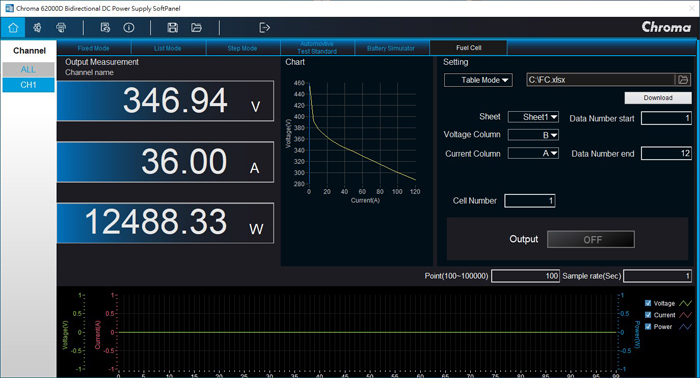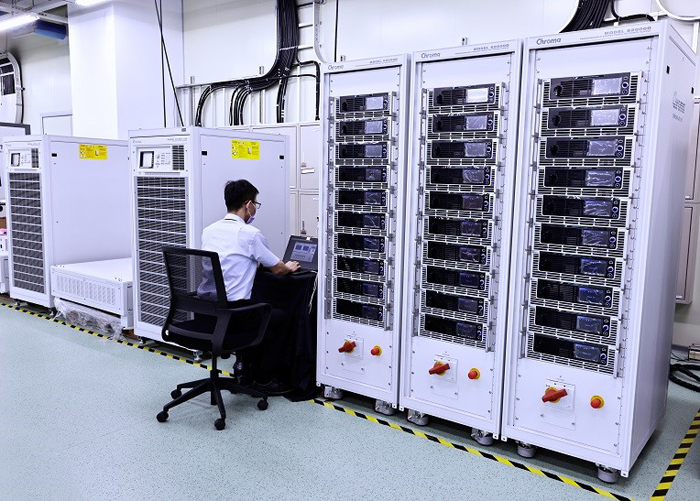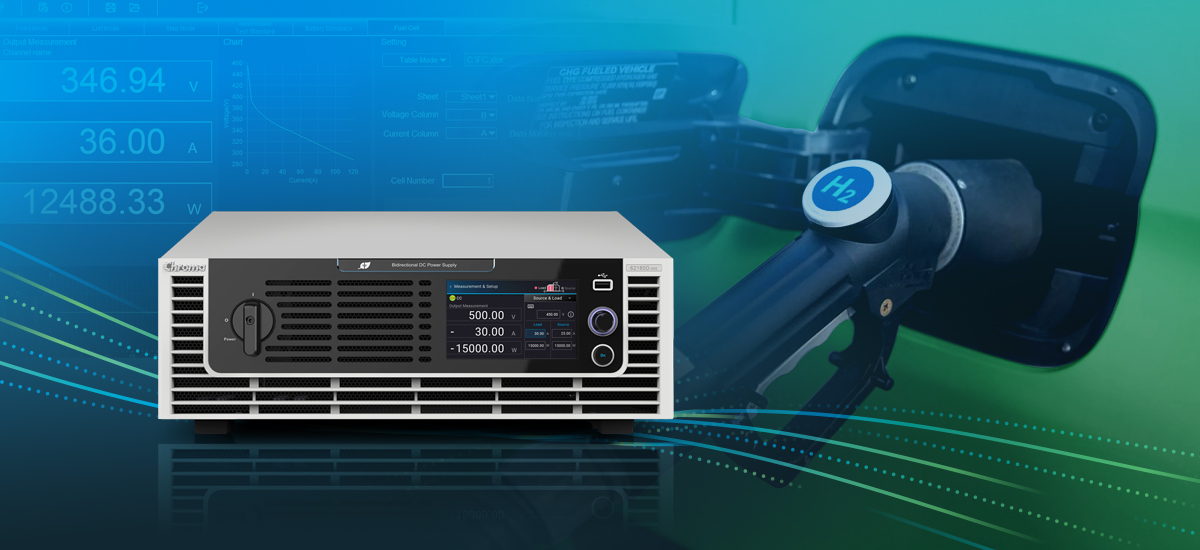Hydrogen fuel cells are not stable voltage sources; their voltage dynamically varies with the magnitude of the load current. For instance, a 40kW hydrogen fuel cell stack can output voltages ranging from 256V to 384V, with a variation of up to 40%. Therefore, when using fuel cells to provide power to e-drive systems in electric vehicles, voltage stability must be ensured with the help of DC-DC power converters. During the development and testing of DC-DC converters, fuel cell simulators are commonly used in place of actual fuel cell stacks to save hydrogen fuel and ensure safety.
Research indicates that in 2022, the average power of a fuel cell motor in the market exceeded 100kW, with nearly half having capabilities over 120kW. It follows that to meet the needs of testing hydrogen fuel cell-related components, higher-specification equipment is required; ideally a programmable DC power supply with high transient response, voltage, and power output capabilities.
Chroma 62180D-1200 Bidirectional DC Power Supplies support paralleling up to 30 units for an output power of 540kW and an output current of 1200A. This meets the requirements of today’s fuel cell engine assemblies, enabling the instruments to function as a highly efficient fuel cell simulator with energy recycling functionality. When using Chroma’s SoftPanel operating software, users can realistically simulate fuel cell characteristic curves. I-V curve data of a complete fuel cell stack can be imported for characteristic simulation testing.

Alternatively, users can select built-in fuel cell characteristic data, combined with Cell Number settings (series concept, primarily for voltage enhancement), and Area settings (parallel concept, mainly for current enhancement), to produce characteristic curve data through synthesis. Due to the millisecond-level transient response times of this Chroma fuel cell simulator, the solution is suitable for dynamic response and stability testing of DC-DC power converters in laboratories, as well as long-term durability and functional system verification. Shown below is an example of using 30 parallel-connected units to achieve high-power fuel cell simulation testing for DC-DC converters.

